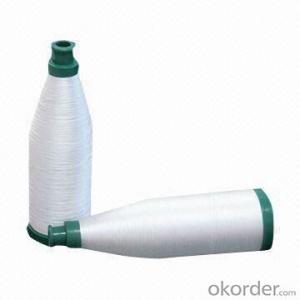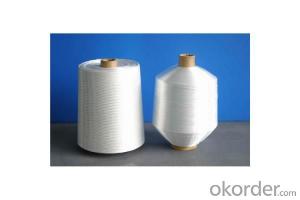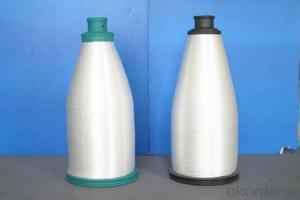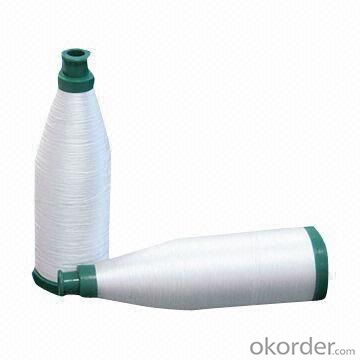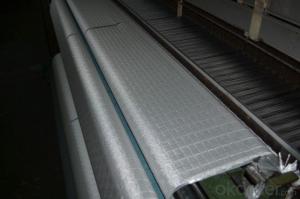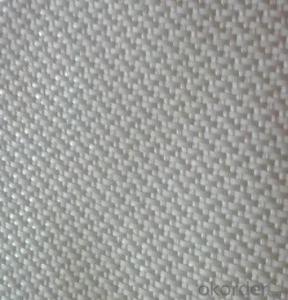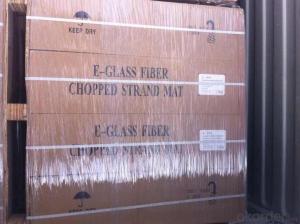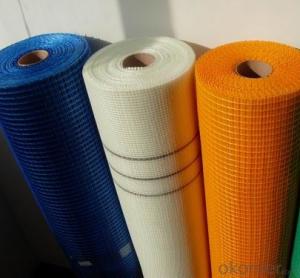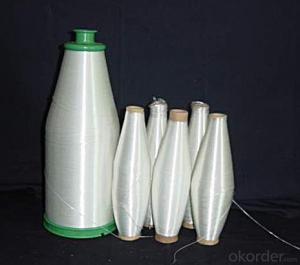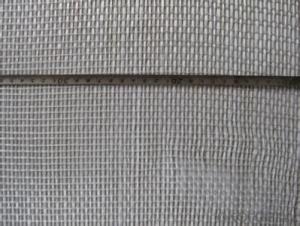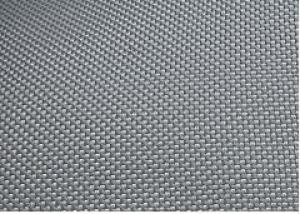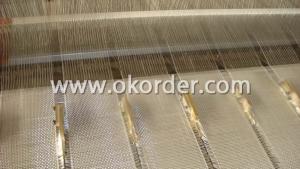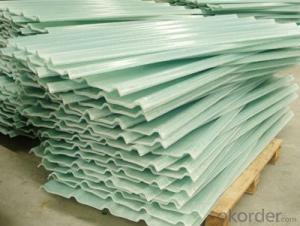Fiberglass Fabrics - C/E Fiber Glass Yarns with Best Price and Quality
- Loading Port:
- China Main Port
- Payment Terms:
- TT or LC
- Min Order Qty:
- 2000kg kg
- Supply Capability:
- -
OKorder Service Pledge
OKorder Financial Service
You Might Also Like
Description:
C or E textile glass a kind of additional twisting and plying yam. With the characteristics of high strength, corrosion resistance, heat resistance and high moisture absorption, no alkali yam has high electric insulation, so it used to produce weaved wires and cables’ wrap cladding, protection sleeve, train of mine, insulation materials of electric machinery, every yam of woven cloth and other industrial yam. It can also supply big and little paper cube and other cube yams with different shapes and different roll weight.
Product Features:
● Good Dispersibility.
● Less fuzzy.
● Density Even.
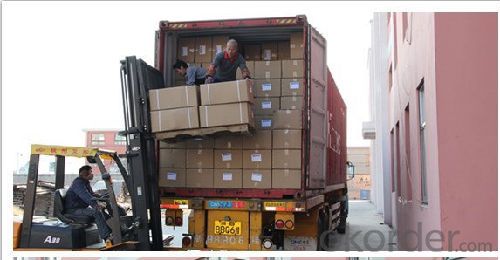 Product Specifications:
Product Specifications:
Product Code | Tex | diameter (um) | Sizing. | breaking strength | Twist |
CC7.5-22-1/2 110S | 44 | 7.5 | paraffin | ≥15.5 | 110±10 |
EC9-33-1/2 65S | 66 | 9 | ≥24.1 | 65±5 | |
EC8-25-1/2 65S | 50 | 8 | ≥19.2 | 65±5 | |
CC9-33-1/2 65S | 33 | 9 | ≥20.6 | 65±5 | |
CC11-44-6/0 | 264 | 11 | ≥81.6 | ||
CC11-44-1/3 110S | 132 | 11 | silane | ≥40.8 | 28±3 |
EC9-68-1/0 28Z | 68 | 9 | ≥18.0 | 28±3 |
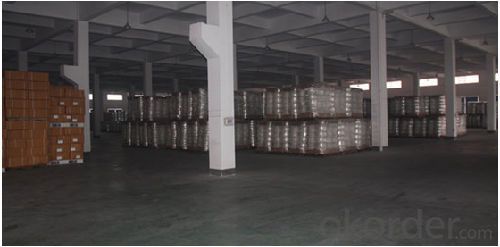

Storage:
Unless otherwise specified,It should be stored in a dry, cool and rain-proof area. It is recommended that the room temperature and humidity should be always maintained at 15℃~35℃ and 35%~65% respectively.
packaging:
with cartons
FAQ:
1.What is the delivery time ?
15days after receiving the deposit
2.Are you a trading company or factory.
We are factory,and we have more than 10 years of experience.
- Q: Can fiberglass fabric be used for insulation in aerospace applications?
- Yes, fiberglass fabric can be used for insulation in aerospace applications. Fiberglass fabric is known for its excellent thermal insulation properties, making it an ideal choice for aerospace applications where temperature regulation is crucial. It is lightweight, flexible, and can withstand high temperatures, making it suitable for use in various aerospace components such as engine compartments, fuel tanks, and aircraft interiors. Additionally, fiberglass fabric is resistant to chemicals, moisture, and fire, providing an added layer of safety and protection in aerospace environments. Overall, fiberglass fabric is a reliable and widely used insulation material in aerospace applications due to its excellent thermal properties and durability.
- Q: How do fiberglass fabrics perform in terms of abrasion resistance?
- Fiberglass fabrics are known for their exceptional abrasion resistance properties. Due to the nature of the material, which consists of fine fibers of glass woven together, they offer high resistance to wear and tear caused by rubbing or scraping against rough surfaces. This makes fiberglass fabrics highly durable and suitable for applications that require protection against abrasion, such as industrial and automotive sectors. Additionally, fiberglass fabrics often have a smooth surface finish, further enhancing their ability to withstand friction and maintain their integrity over time. Overall, fiberglass fabrics are considered to be excellent performers in terms of abrasion resistance.
- Q: Can fiberglass fabric be used for reinforcement in composite materials?
- Indeed, composite materials can benefit from the inclusion of fiberglass fabric as reinforcement. Fiberglass is widely employed in composites owing to its impressive ratio of strength to weight, resistance to corrosion, and endurance. Typically, the fabric consists of delicate glass fibers expertly interwoven, granting it exceptional tensile strength and adaptability. When combined with a matrix material like epoxy resin, the fiberglass fabric fortifies the composite structure, thereby improving its mechanical characteristics. Consequently, fiberglass fabric emerges as an optimal selection for industries such as aerospace, automotive, construction, and marine, where the need for lightweight, robust, and enduring materials is paramount.
- Q: How is fiberglass fabric used in the production of insulation papers?
- Fiberglass fabric is commonly used in the production of insulation papers due to its excellent thermal properties and durability. The fabric is usually made from fine strands of glass fibers that are woven together to form a strong and flexible material. In the production of insulation papers, fiberglass fabric is often used as a reinforcement layer. It is placed between layers of paper or other insulating materials to provide added strength and stability. The fabric helps to prevent tearing or ripping of the insulation papers, ensuring their longevity and effectiveness. Moreover, fiberglass fabric is also highly resistant to heat, making it an ideal choice for insulation applications. It can withstand high temperatures without melting or degrading, allowing it to effectively retain and reflect heat within the insulation system. This property is crucial in preventing heat loss or gain, leading to energy efficiency and cost savings. Furthermore, the use of fiberglass fabric in insulation papers enhances their fire resistance capabilities. Fiberglass is inherently non-combustible and does not contribute to the spread of flames. When incorporated into insulation papers, it acts as a barrier against fire, helping to contain and limit its spread. Overall, fiberglass fabric plays a vital role in the production of insulation papers by providing strength, thermal insulation, and fire resistance. Its use ensures that the insulation materials are durable, energy-efficient, and safe, making it a preferred choice in various industries such as construction, automotive, and aerospace.
- Q: How is fiberglass fabric cleaned and maintained?
- Achieving cleanliness and maintaining fiberglass fabric is easily accomplished through a few uncomplicated measures. Initial attention should be given to eliminating loose dirt or debris from the fabric by employing gentle brushing or vacuuming techniques. This preliminary action serves to prevent particles from becoming embedded within the fabric during the subsequent cleaning process. Next, it is imperative to concoct a cleaning solution by blending mild detergent or soap with warm water. It is advised to refrain from employing harsh chemicals or bleach, as these substances possess the potential to inflict damage upon the fabric. Submerge a soft cloth or sponge into the prepared cleaning solution and proceed to cautiously scrub the fiberglass fabric. Care should be taken to avoid exerting excessive pressure, as doing so may result in the stretching or tearing of the fabric. Upon completing the scrubbing phase, it is necessary to thoroughly rinse the fabric with clean water to eradicate any lingering traces of soap. The removal of all vestiges of detergent is crucial as it serves to deter future accumulation of dirt. Following the rinsing process, it is recommended to allow the fabric to air dry completely. The utilization of a dryer or exposure to direct sunlight should be avoided, as these factors may contribute to shrinkage or fading. To ensure the fabric's cleanliness is maintained, it is advisable to regularly brush or vacuum its surface to eliminate any superficial grime. Additionally, when not in use, storing the fabric in a clean and dry location is highly recommended, as this measure will impede the accumulation of dust or debris. By adhering to these straightforward steps for cleaning and maintenance, fiberglass fabric can remain in optimal condition and endure for an extended duration.
- Q: Does fiberglass fabric have any health hazards?
- When used correctly, fiberglass fabric does not present significant health risks. However, it is crucial to exercise caution and take specific measures to reduce potential dangers when working with fiberglass fabric. The primary issue with fiberglass fabric lies in its ability to emit fine fibers or dust particles into the atmosphere, which can be harmful if inhaled. These fibers can cause irritation to the skin, eyes, and respiratory system, resulting in temporary symptoms like itching, redness, coughing, or breathing difficulties. Prolonged exposure to fiberglass fibers can also lead to more severe health problems, including lung scarring (fibrosis) or cancer. To prevent exposure and minimize health risks, it is advisable to consistently wear personal protective equipment (PPE) while handling fiberglass fabric. This includes donning gloves, long-sleeved clothing, safety glasses, and a dust mask or respirator. Furthermore, working in a well-ventilated area or utilizing local exhaust ventilation systems can effectively decrease the concentration of airborne fibers. It is important to note that fiberglass fabric itself is not toxic, as it consists of bonded glass fibers and resin. The potential health risks arise from the release of these fibers into the air, primarily during activities such as cutting, sanding, or other processes that generate dust. Overall, by adhering to proper safety protocols, fiberglass fabric can be used safely without significant health hazards. Nevertheless, it is imperative to take precautions to minimize exposure to airborne fibers and protect oneself when working with this material.
- Q: Can fiberglass fabrics be used for automotive applications?
- Yes, fiberglass fabrics can be used for automotive applications. They are commonly used for making car body parts, such as hoods, fenders, and panels, as well as for reinforcing and strengthening various automotive components. Fiberglass fabrics offer excellent strength-to-weight ratio, durability, and resistance to corrosion and chemicals, making them suitable for automotive use.
- Q: How does fiberglass fabric perform in moisture absorption?
- Fiberglass fabric is known for its excellent performance in moisture absorption. Due to its inherent characteristics and composition, fiberglass fabric has a very low moisture absorption rate. The fabric is made from fine fibers of glass that are woven together, creating a tight and dense structure. This structure prevents moisture from easily penetrating the fabric. Compared to other materials such as cotton or polyester, fiberglass fabric has a much lower moisture absorption rate. It does not readily soak up moisture like natural fibers, and it does not retain water for long periods of time. This is advantageous in applications where moisture resistance is important, such as in outdoor or marine environments. The low moisture absorption of fiberglass fabric also helps to maintain its dimensional stability. Even when exposed to high levels of humidity or moisture, the fabric does not swell or warp. This makes it a suitable choice for applications where maintaining shape and integrity is crucial, such as in composite materials or reinforcement applications. Furthermore, the low moisture absorption of fiberglass fabric also contributes to its resistance to mold and mildew growth. Since moisture is not easily absorbed by the fabric, it creates an unfavorable environment for the growth of these microorganisms. This property makes fiberglass fabric a popular choice in applications where moisture resistance and hygiene are important, such as in the manufacturing of medical equipment or food processing industry. In summary, fiberglass fabric performs exceptionally well in moisture absorption. Its low moisture absorption rate, dimensional stability, and resistance to mold and mildew growth make it a reliable choice in various industries and applications.
- Q: Is fiberglass fabric resistant to chemicals in mining operations?
- Fiberglass fabric, in general, exhibits resistance to chemicals commonly encountered in mining operations. Its exceptional chemical resistance is well-known, making it a preferred option for diverse industrial uses, such as mining operations. It possesses high resistance against a wide array of chemicals typically found in mining environments, including acids, alkalis, solvents, and corrosive substances. This resistance guarantees the fabric's durability and unaffected state even after exposure to chemicals, offering a dependable and enduring solution for protective clothing, equipment covers, and other mining operation applications.
- Q: Can fiberglass fabric be used for upholstery?
- Yes, fiberglass fabric can be used for upholstery. Fiberglass fabric is a versatile material that offers several benefits for upholstery applications. It is known for its durability and resistance to wear and tear, making it suitable for high-traffic areas. Fiberglass fabric is also resistant to stains, mildew, and fading, which makes it a popular choice for outdoor furniture upholstery. Additionally, it can provide excellent support and structure to cushions and upholstery foam, ensuring longevity and comfort. However, it is important to note that fiberglass fabric may not be as soft or comfortable as other upholstery materials like cotton or polyester. Therefore, its use should be considered based on the specific requirements and preferences of the project.
Send your message to us
Fiberglass Fabrics - C/E Fiber Glass Yarns with Best Price and Quality
- Loading Port:
- China Main Port
- Payment Terms:
- TT or LC
- Min Order Qty:
- 2000kg kg
- Supply Capability:
- -
OKorder Service Pledge
OKorder Financial Service
Similar products
Hot products
Hot Searches
Related keywords
